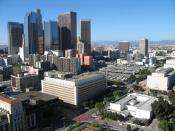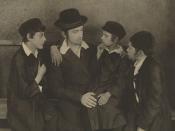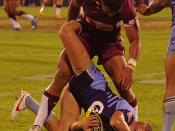Jacobs explores cities as living things and ecosystems, suggesting that, with time, streets and neighborhoods function as changing organisms in response to the way people interact with them. She further explains that, city sidewalks, neighborhoods, government and the economy functions together in the same way as the ecosystem hence creating a better understanding on how they could be structured better. She says that "a city sidewalk is nothing. It is an abstraction. It means something, only in conjunction with the buildings and other uses that borders it, or borders other sidewalks very near it". Streets and their sidewalks are said to be the most important organs of a city. These are the determinants of how the city looks in that, if they look interesting, the city looks interesting, and the same case applies if the streets and sidewalks look dull. (Jacobs 29)In her explanation of safety in the cities, Jacobs postulates that, "if streets are safe from barbarism and fear, the city is thereby tolerably safe from barbarism and fear.
When people say that a city, or a part of it, is dangerous or is a jungle, what they mean primarily is that, they do not feel safe on the sidewalks". She also argues that, sidewalks, their uses and users are all active participants in the arena of civilization versus barbarism in the cities. Safety in the cities is said to be the task of the city streets and their sidewalks and that, public peace cannot be kept primarily by the police but also by a network of voluntary controls and standards among the people and enforced by them. (Jacobs 30&32)Jacobs approves a high concentration of people as being important for city life neighborhoods, economic growth and prosperity though it is not enough to produce a vibrant...


